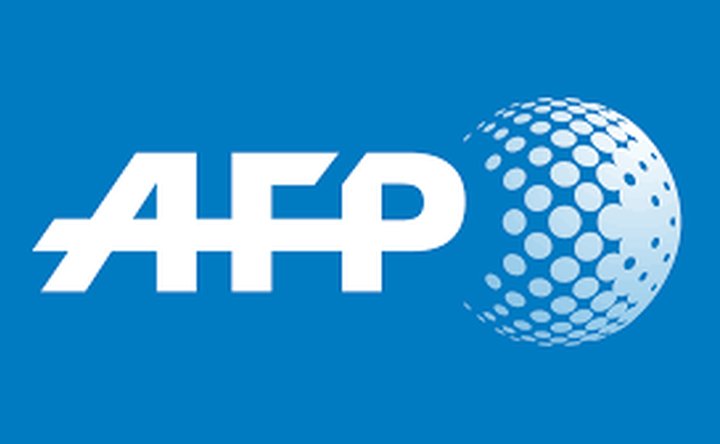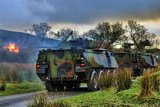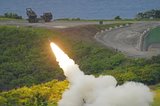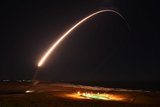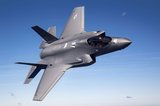Violence halts UN aid convoys from Jordan to Syria's Daraa
The UN said on 28 June that it had halted cross-border convoys carrying desperately needed aid from Jordan to southern Syria over security concerns amid a barrage of air strikes on rebel-held towns.
Jan Egeland, the head of the UN's Syria humanitarian taskforce, told reporters in Geneva: ‘The extremely effective lifeline across the border from Jordan has been discontinued due to the fighting in recent days.’
He said no aid convoys had crossed the border in the past two days.
His comments came amid a barrage of Russian strikes on rebel-held towns in southern Syria, killing 22 civilians on 28 June alone, making it the bloodiest day yet of the government's offensive in the strategic region.
With Moscow's help, Syrian President Bashar al-Assad's army has battered the south for more than a week with air strikes, rocket fire and crude barrel bombs.
The UN has warned that more than 750,000 lives are at risk in the south, which is meant to be protected by a ceasefire put in place in 2017 by Russia, Jordan, and the US.
But now, President Bashar al-Assad has set his sights on retaking the area.
‘Tens of thousands of civilians are fleeing for their lives,’ Egeland said, describing the situation as ‘heart wrenching, because this was a zone were people felt safe until just ten days ago.’
He urged Russia, Jordan and the US to re-establish the de-escalation agreement they hammered out for the area last July, insisting ‘they can do it again.’
Egeland said: ‘There is nothing inevitable about this escalation of fighting.’
The bombardment has already forced more than 50,000 to flee their homes in search of safety, according to the UN, while others huddle in their basements to wait out the raids.
Egeland said the fighting was ‘so intense’ that the UN had failed to ‘reach sufficient agreements on safe passage for the convoys.’
He called on ‘all who have influence on the situation,’ including Russia, the US and Jordan, ‘to do their utmost to ensure that we get that kind of assurance, and then the convoys will resume.’
The onslaught has sparked fears of a re-run of the offensives in 2017 against the rebel enclaves of Aleppo and eastern Ghouta, including deadly bombardments followed by a retaking of territory and an accord to evacuate rebels from the areas.
While most civilians on the move are fleeing towards Jordan, Amman has said it intends to keep the border closed, insisting it is unable to host the new wave of refugees.
The small country of around nine million people is already estimated to have taken in close to 1.3 million fleeing Syrians, and to have spent more than $10 billion hosting them.
Egeland acknowledged on 28 June that Jordan had been more than generous, and said he felt hesitant to ask more of the country, especially at a time when European countries ‘have a pathetic quarrel’ over taking in much lower numbers of migrants and refugees.
But he appealed to Jordan to ‘keep its border open for people fleeing.’
He added: ‘There is no other place to go.’
More from Defence Notes
-
![Taiwan approved for purchase of $11 billion in weapons from US]()
Taiwan approved for purchase of $11 billion in weapons from US
The US State Department’s approval of a multi-billion-dollar sale of weapons to Taiwan includes tactical mission networks equipment, uncrewed aerial systems, artillery rocket systems and self-propelled howitzers as well as anti-tank guided missiles.
-
![US National Security Strategy prioritises advanced military capabilities and national industry]()
US National Security Strategy prioritises advanced military capabilities and national industry
The 2025 NSS has emphasised investment in the US nuclear and air defence inventory and national industry, but it leaves multiple unanswered questions on how the White House will implement this approach.
-
![Canada set to look away from its neighbour and across the Atlantic for partners]()
Canada set to look away from its neighbour and across the Atlantic for partners
While non-EU UK struggles to join the Security Action for Europe initiative, which provides loans for defence programmes, Canada has become the first country outside Europe to get access – and did so for a nominal fee.
-
![NATO experiments with solutions to integrate networks, AI and uncrewed systems]()
NATO experiments with solutions to integrate networks, AI and uncrewed systems
During the latest edition of the NATO DiBaX, the alliance tested multiple capabilities to inform requirements for future efforts.








